Artist Interviews 2022
Ifeoluwa Alade 
By Laura Siebold
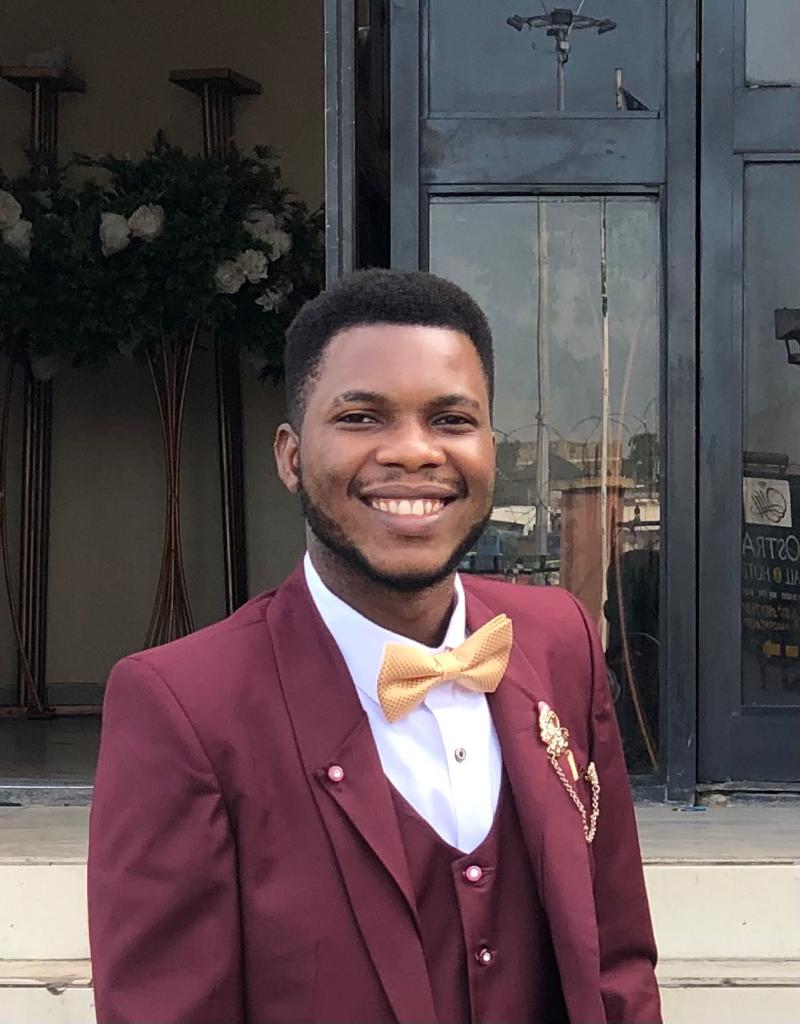
Ifeoluwa Alade is a Nigerian artist, creating beautiful portraits of women. His art was exhibited at the LA Art Show 2022, and instantly caught my eye. In his interview, Ife tells us about intentionally creating his paintings as a diary, his early encounters with art and the art education he received, as well as is focus on facial expressions and moods in his work. Ifeoluwa introduces us to Araism as an African art movement and the basis for his special painting technique. Ifeoluwa uses his work to portray the connections and relationships between people, using “[s]urrealism as a concept and form of expression”.
Ifeoluwa is based in Lagos, Nigeria.
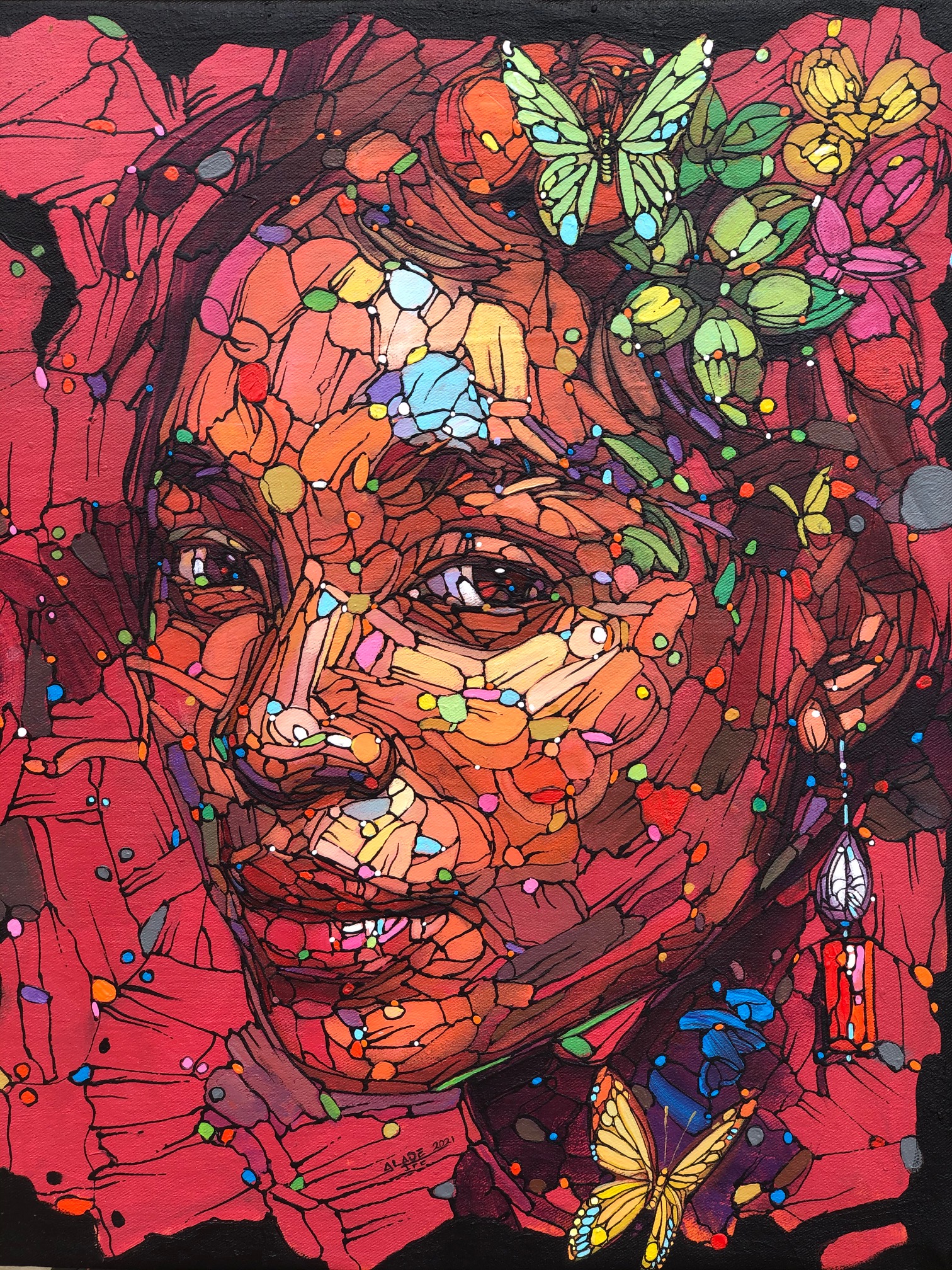
Your paintings share a unique language by expressing unspoken ideas through art. How do you convey your ideas through painting?
It it is said that a picture is worth a thousand words, and I have also discovered that a painting or artworks are like an information carriage delivering more than the intended message of the creator.
I make my paintings like a diary openly displayed for viewers to read and interact with its content, trusting that someone would see a page written with the faintest ink of my heart, and it’s been great knowing that people could find their stories in my story. My painting as a diary is where I freely communicate my feelings unhindered and even when I hold back some certain information knowing it is a diary viewed by public, my emotions has always had its way to reflect in most pieces.
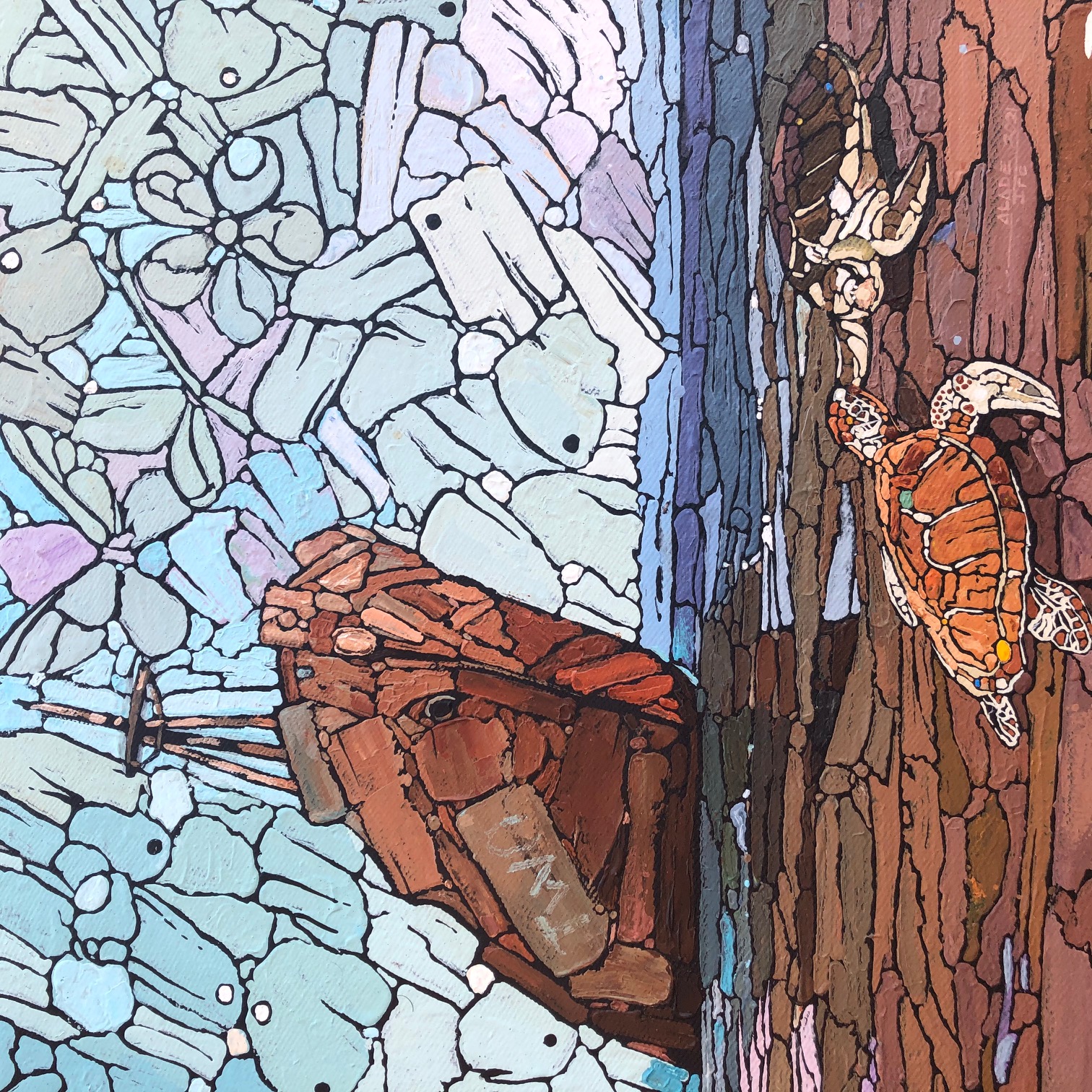
We are curious about your background. Did art play a role in your upbringing? When did you first start experimenting with different art forms and how did you find your unique voice as an artist?
Making art as a kid was free and unintentional for me just like other children. Even with the limited materials I had access to, I could creatively create toys for myself.
My parents didn’t see me becoming an artist at first because I was just a creative kid with loaded ideas. I could fix rechargeable lamps and some other faulty appliances and while playing with numerous kinds of things, I had also done good damages, having fun. I didn’t grow up having the thought to be an artist, but uniquely I had enjoyed doing anything art right from childhood and I took special interest in subjects that involved drawings. I often helped my classmates and friends in the neighborhood with their drawing assignments.
In 2013 while I was deliberating on what course to study, I met Akintomide Noah- an art student who was studying art in college. He is also a brother to my classmate. I was dazzled by the fact that one could study fine art as a course, so I decided to choose fine art instead of law. It wasn’t an easy decision but I was sure it would make me happy. I proceeded to purchase some art books and materials to study and to practice while I got admitted into the university - Obafemi Awolowo University ile-Ife Nigeria in 2014.
Furthermore, I worked as an intern learning under an art instructor, Jonathan Imafidor, who was at that time a lecturer. He became my art mentor and that contributed immensely to my art career. My growth over the years came out of understudying his works and making extra practice and research.
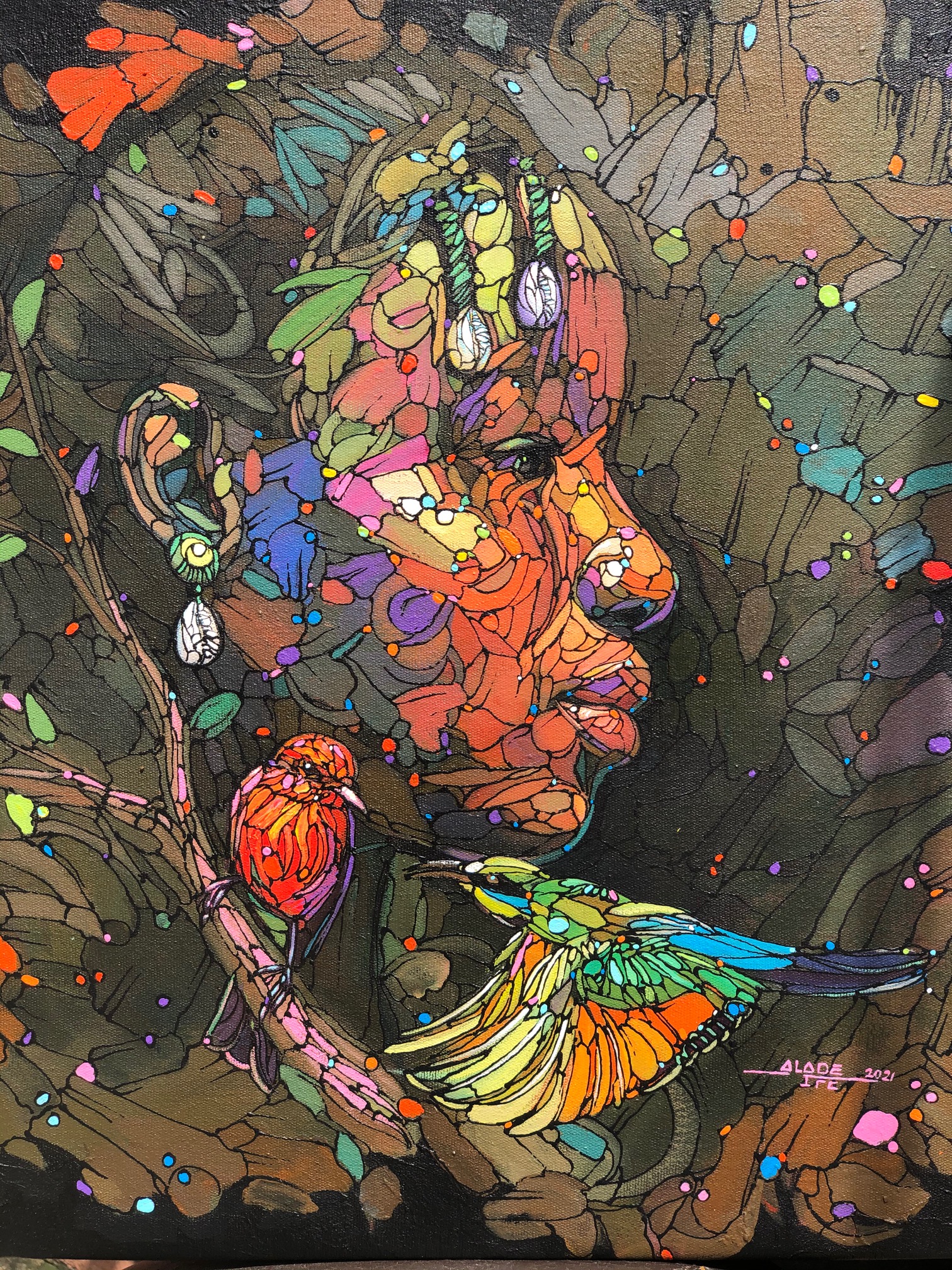
You often depict women in your artwork. What does the female gaze, frozen at a moment in time, express in your paintings? How do you succeed to combine both elements of the human and the natural world in your work?
I have interest in facial expressions and moods. This is a determinant to why I choose a reference photo for my work. 80 percent of my portraits and figures have been female. I believe women faces wear a wider range of expressions and I often find the essence and depth of my narrative best communicated by using them. The narrative most times determines the subject that I use.
Combining elements of human and nature all started by the desire to make a difference and a statement with my work. I feel a work is incomplete without the necessary elements. I met several research and study artists whose works are in line with what I intended to create at a particular time. Works of artists like Jim Warren, Oleg Shupliak, Salvador Dali, and other artists has influenced some of my works.
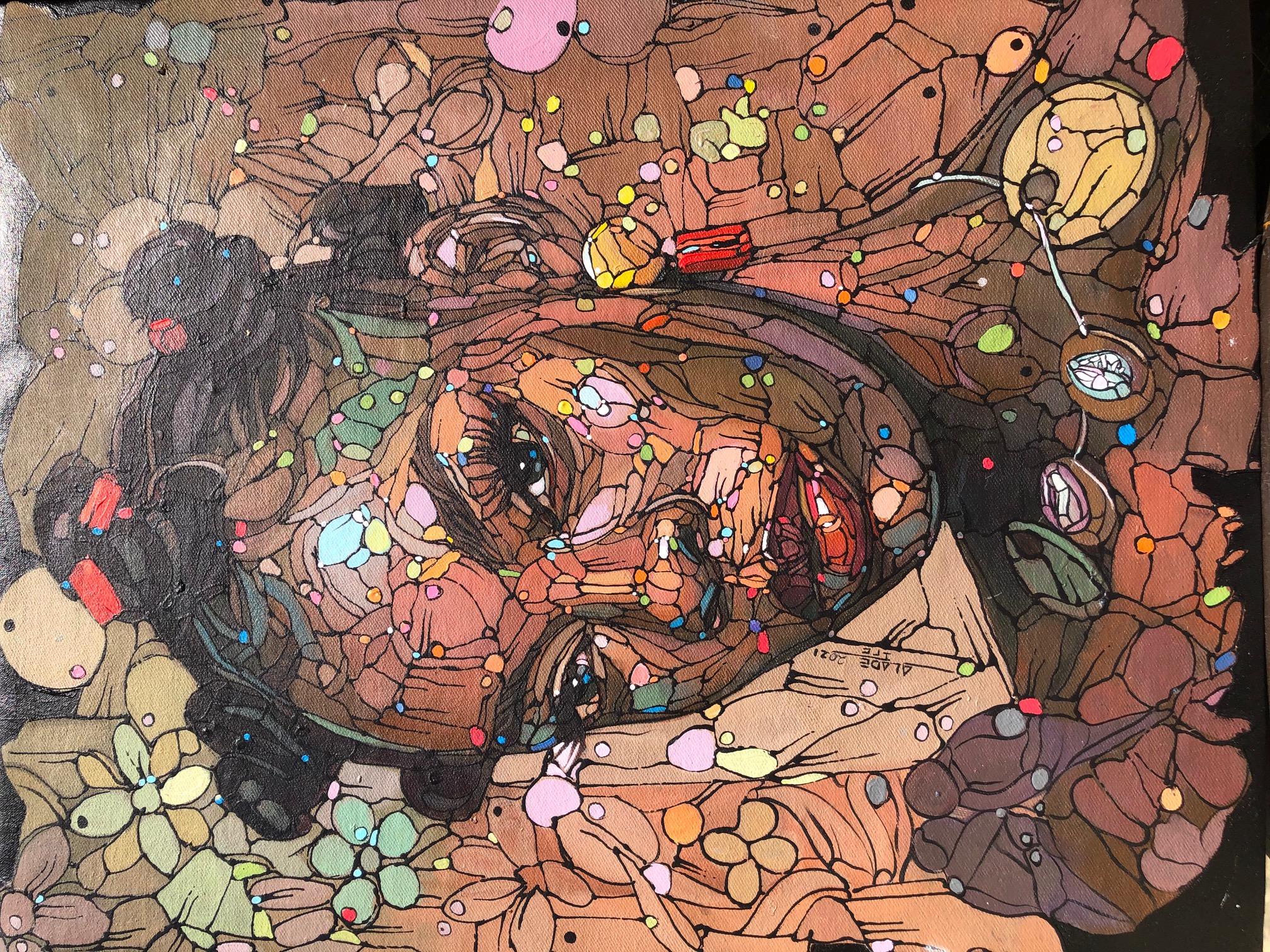
What is special about Araism as an authentic African art movement? Can you explain the process of this technique to us a little bit?
Araism is an art movement founded by Mufu Onifade in 2006. The name is coined from the word ‘Ara’. Ara is a word in Yoruba language from Western Nigeria which means a number of things dependent on the pronunciation. There are four meanings this word suggests which are all peculiar to the essence and establishment of Araism as movement. Ara means thunder, wonder(styling), skin, relative, and all these four separate meanings are significant basics of what Araism as a movement represents. (review from a write up by Edozie Udeze)
As a student working under art instructor Jonathan who was also a member of Araism movement before relocating to Atlanta, USA, my first encounter with Araism works was from his studio. He taught me how to paint and I had laid my hand on different materials exploring different styles and techniques after then.
Araism works are done on a black surface, painting every single fragment of the painting bit by bit in accordance with a chosen pattern or motif after a detailed sketch has been done. Most times, pigment is applied using a palette knife. My work process is an inverse method of how Araism work is being made. I start by creating a complete painting traditionally using colorful strokes and dots, then engage in making cracks on it with black lines. Araism as a technique and working under Jonathan has influenced my creative process.
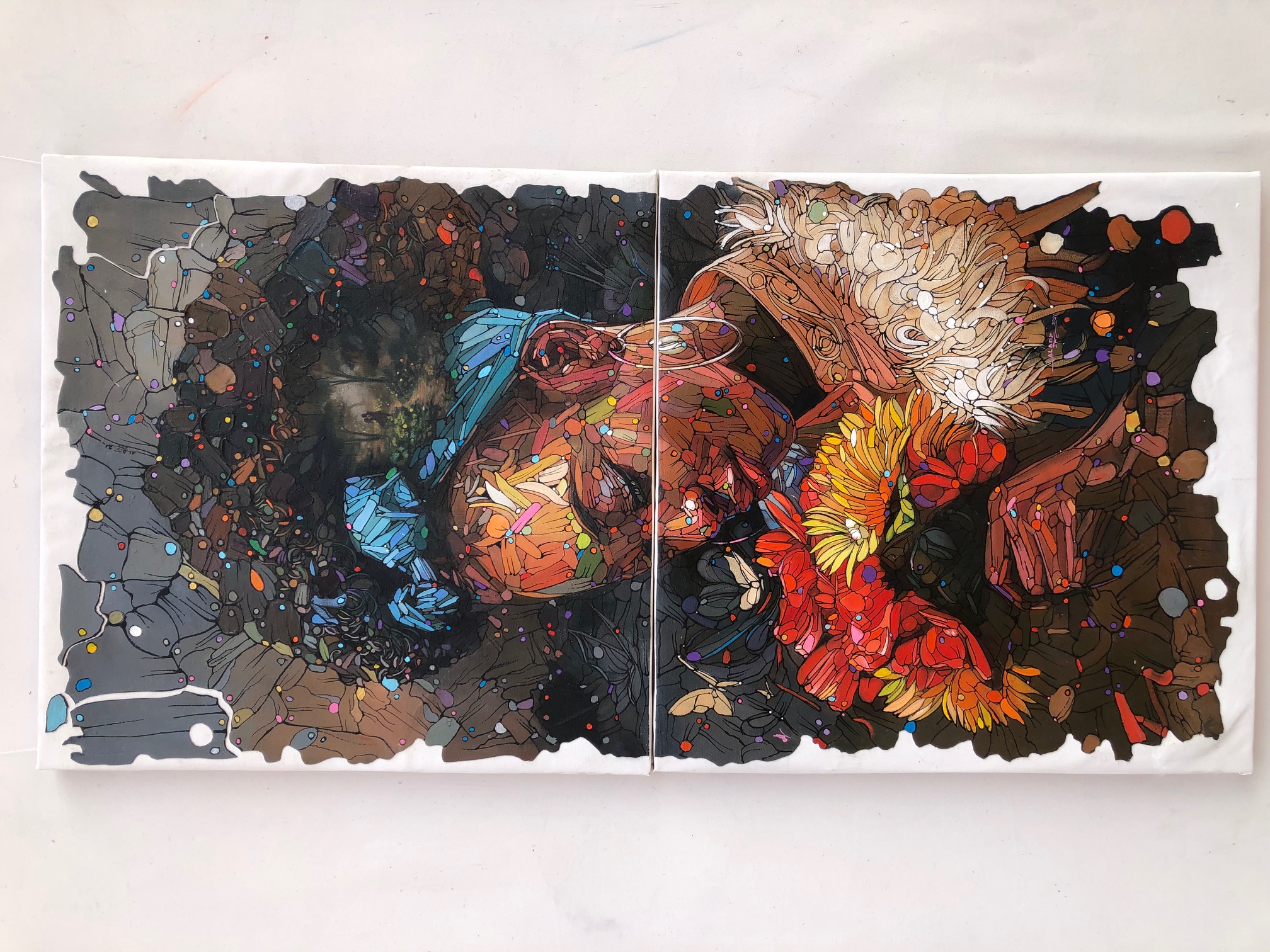
Your art is very colorful, and surrealistic at times. What is the intention behind your art and what do you want your viewers to gain from your art?
Surrealism as a concept and form of expression has accurately accommodated the content of my messages and it gives me space to express myself without boundaries. Surrealism makes it easy to beautifully merge different forms and images together to make my narratives more expressive and well presented to my viewers.
The colorful aspect of my works is subjective to moods and aesthetics. I perceive my works’ beauty by making it colorful. I made a piece in 2021 (journey to the grey land) painted with the dominant of grey shades and blue. With the narrative that the piece is intended to communicate, making it colorful would render it purposeless to me and I would have been insincere to myself to have done it that way.
My works express the connections and relationship existing between people. As much as I want my works to be an expression of my feelings, I also want my works to create a visual experience where people can find themselves in my works and their stories in my story. I explore majorly on the theme of relationship and attachments existing between humans in relation to different activities and their natural environment.
The philosophy about my works is my belief that humans are not a product of singular entity just as we physically appear. Everybody has stories, events, experiences, feelings, ideas, different thought and subjects as fragments combined, that has shaped and formed them to be who they are today, and I believe this should be well respected while dealing with people.
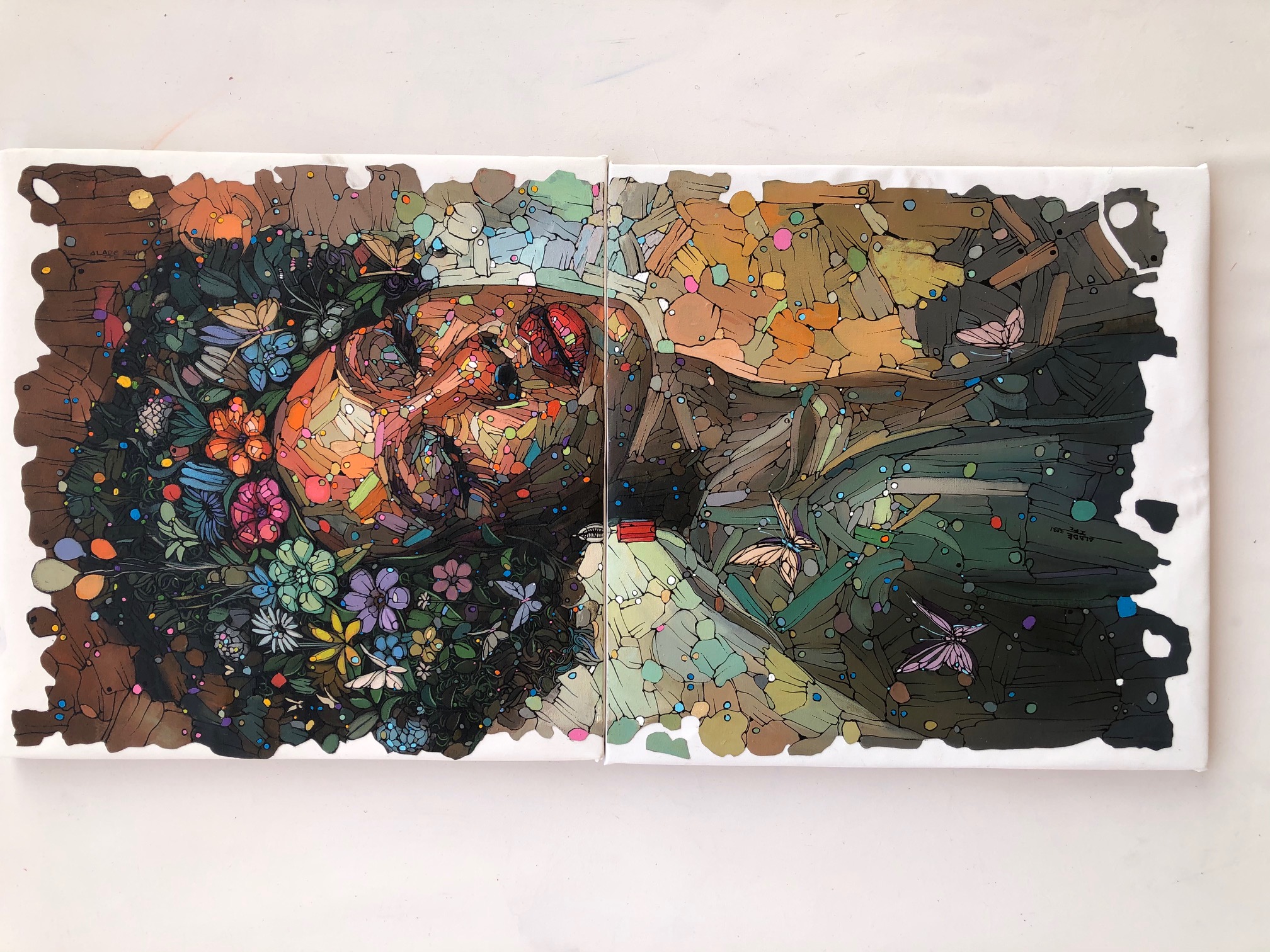
When do you determine a painting as finished? What are the parameters you use to judge the quality of your work as an artist?
This is quite a technical question because there is no definite way to determine my finished piece and if I would be strict with my satisfaction, I would have finished less than five paintings. A brush stroke on canvas could be a finished piece depending on the intention of the artist and his feelings.
Basically, I love to see a reflection of quality time spent on my piece and it is always a joy knowing I had done justice in the details of a piece. I sometimes had to wipe a part of a painting if I feel it doesn’t appeal to me. The works I have best enjoyed are pieces I had spent more time on and that is one of the criteria that determines the quality of my pieces. I once worked about six months on one of my paintings while simultaneously working on other pieces in 2020 (sweetheart, 36 by 50 inches) and the finished piece [was] really worth the time spent on it.
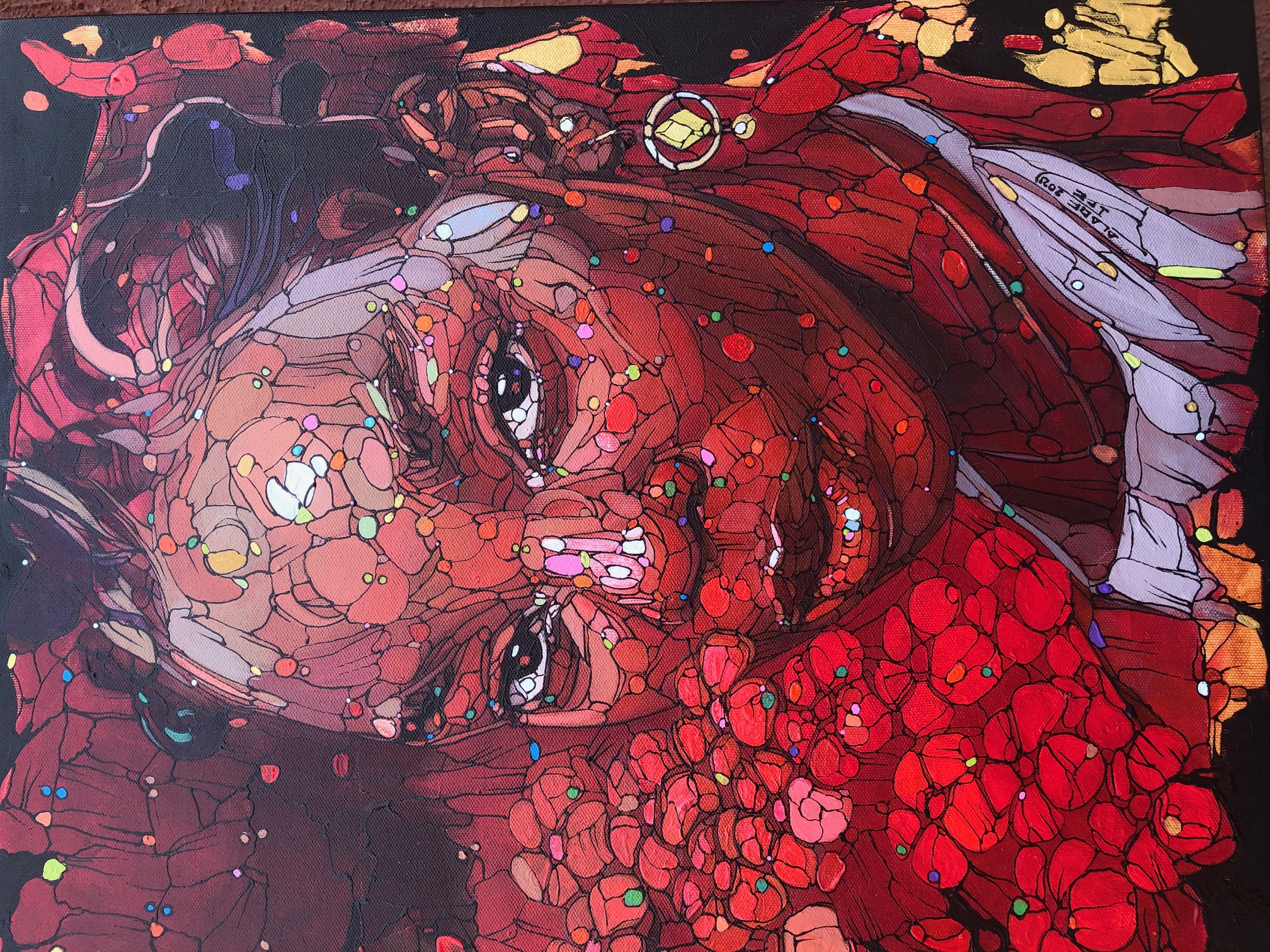
Reflecting on your career, can you recall a specific experience that reassured you to continue your path as an artist?
I have had countless experiences that have strengthened me to keep painting. Exhibiting in Abend gallery is one of those amazing experiences and it was a great opportunity for me. It was also a defining moment in my career as an artist. And I have also met wonderful people who came in contact with my works. The experience of sharing their stories with me was indeed a precious gift.
In July 2021, I met Julie Brit who saw my works at the last day of the LA Art show, she asked me series of questions about a particular piece out of the three works I exhibited at Abend booth and significantly the reason why I chose “Journey to the grey land” as the title. Sharing her story and telling me what she felt at the point she saw my work melted my heart, it was full of emotions, and that indeed made me see another essence my art is fulfilling. I have received beautiful messages and feedback from people which has encouraged me to keep creating.
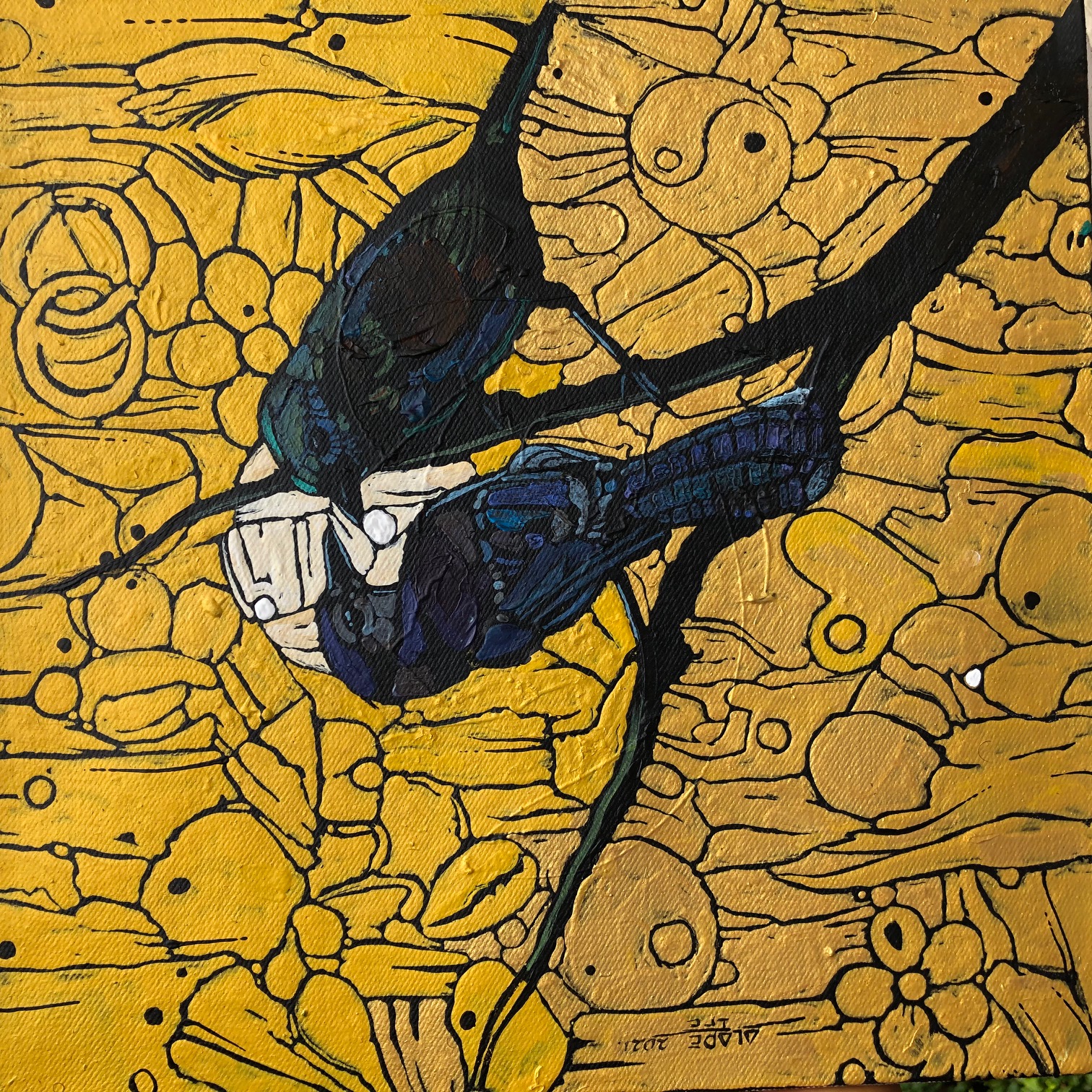
Is there a specific place or country which inspires you and makes you feel most alive? What is special about this particular place and how does the connection show in your work?
I haven’t explored many places to determine if there would be a special place or country that will best influence what I would create. But I prefer to work in a location where I could explore nature, viewing beautiful landscapes, seascapes and flowers. I also love working in quiet places where I would have less or no distraction, working in such condition helps to increase my productivity and it keeps me connected to enjoy the creating process better.
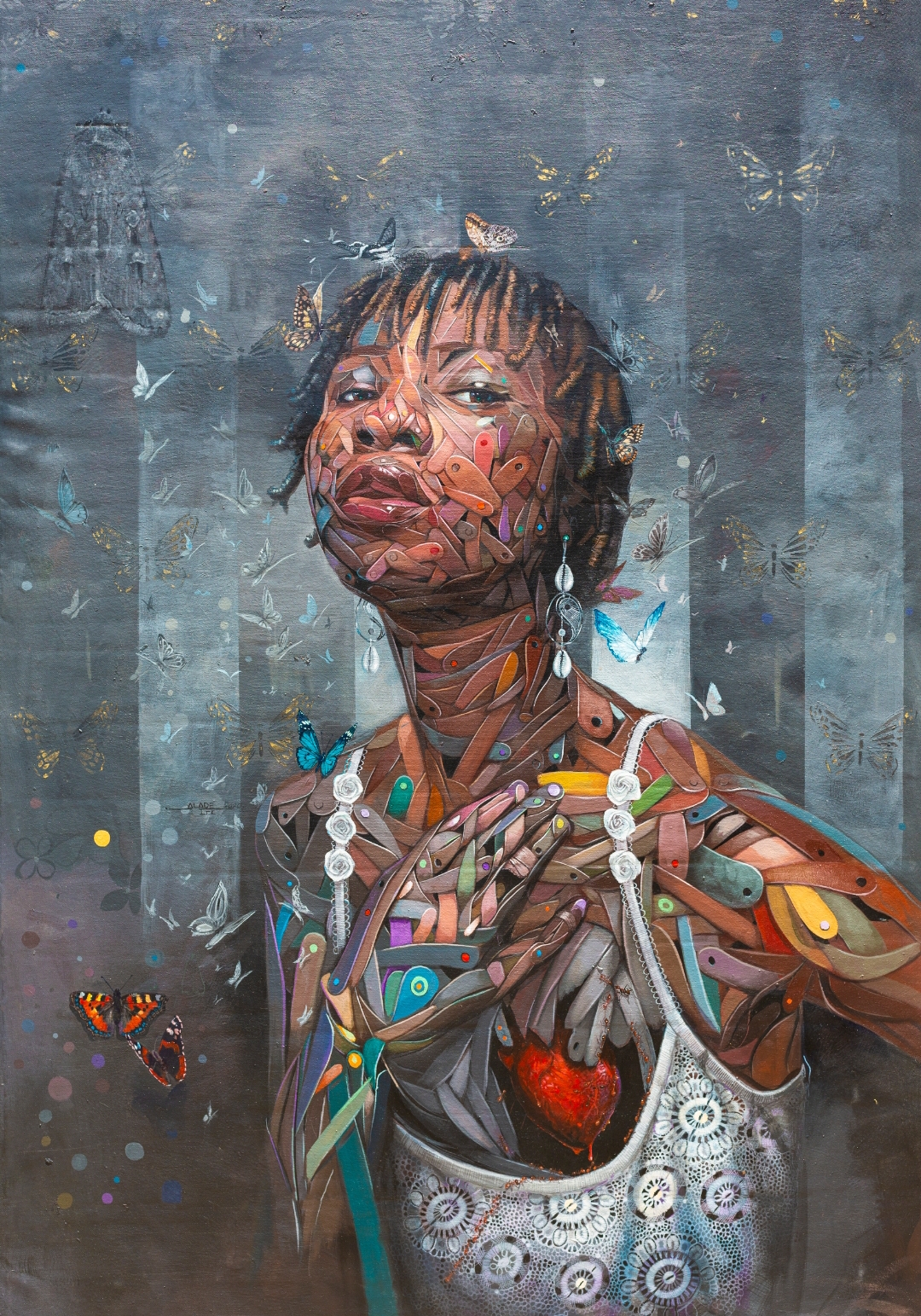
Is there a particular artist you would like to collaborate with in the future and why? What do you hope to gain from the collaboration?
I have a good number of artists that I study in this art space whose works have been a great inspiration to me in different ways.
Alexi Torres is the artist I would love to work with, knowing that would have a great impact in my practice and helping me transitioning into the next phase of my career. His works are always huge and exceptionally complex, done with so much intricate details, he beautifully blends many ideas and forms together in his pieces, having strong solidity. An opportunity to work with him or watch him paint will definitely have a positive effect on my process.
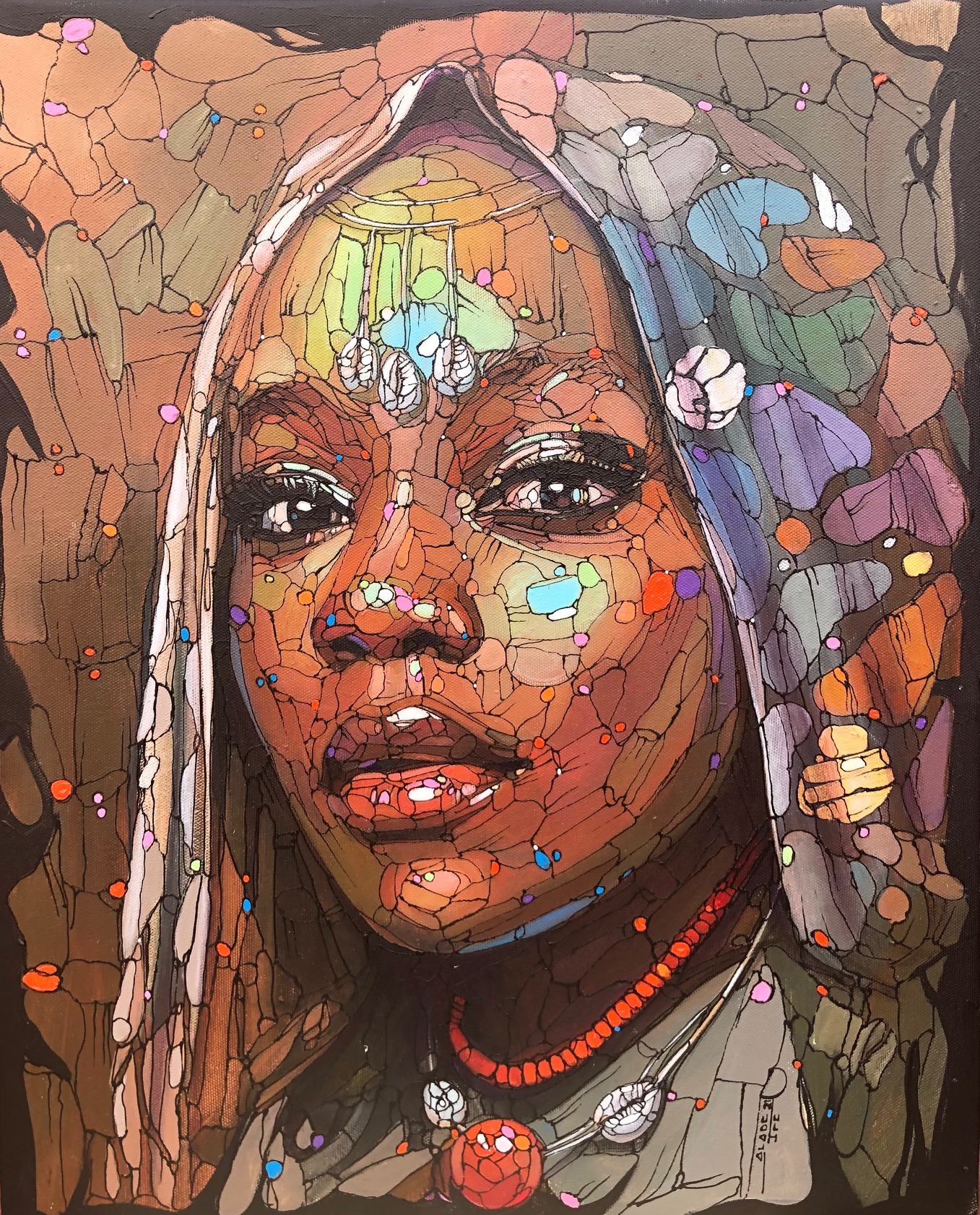
How can your work change the world as we see it?
There is no limit to what I want my works to evolve into and to influence positively. My work preaches reassurance of hope and a culture of love in several things.
|
|

